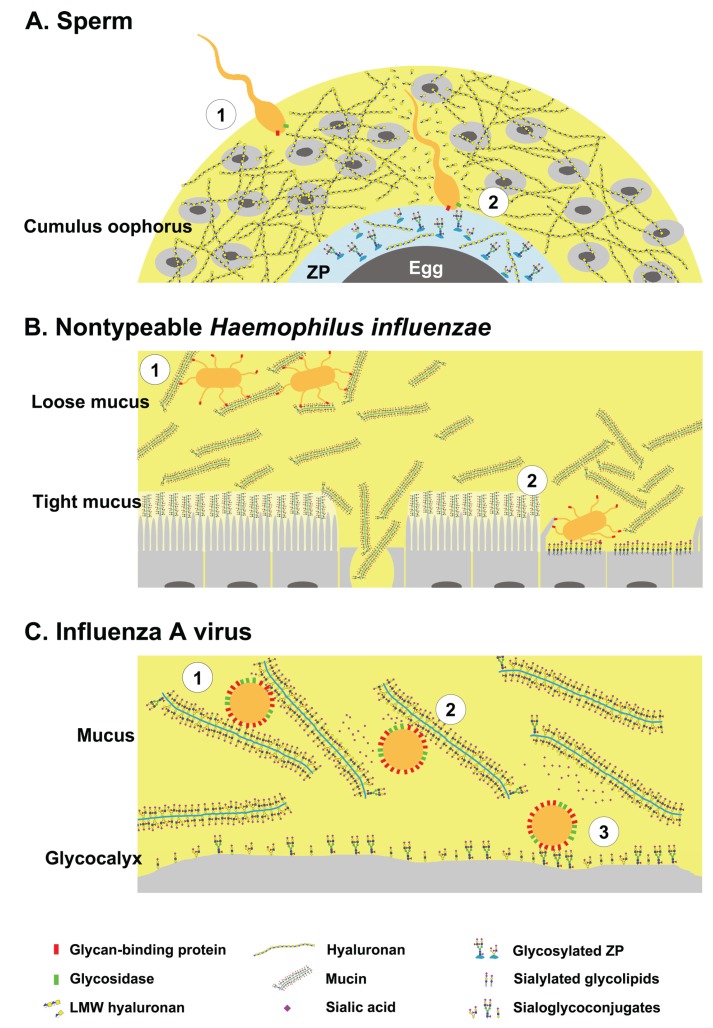Figure 2.
Glycans have dual roles as ligands and decoys during pathogen invasion. (A-1) Sperm bearing hyaluronan binding proteins and hyaluronidase negotiates the cumulus oophorus; (A-2) By cleaving hyaluronan, the sperm penetrates the cumulus layer, then binds to specific glycans on zona pellucida proteins; (B-1) Nontypeable Haemophilus influenzae (NTHi) binds glycosylated mucus and remains in the loose mucus layer; (B-2) Impaired mucus clearance due to ciliary or tissue damage enables NTHi binding to sialylated glycolipids on host cells; (C-1) Influenza A virus bearing hemagglutinin (HA) and neuraminidase (NA) binds to host mucins; (C-2) The virus can free itself from mucins by cleaving sialic acids; (C-3) and binds to sialoglycoconjugates on the host cells. Yellow shaded area represents the highly hydrated cumulus and mucus layers.

